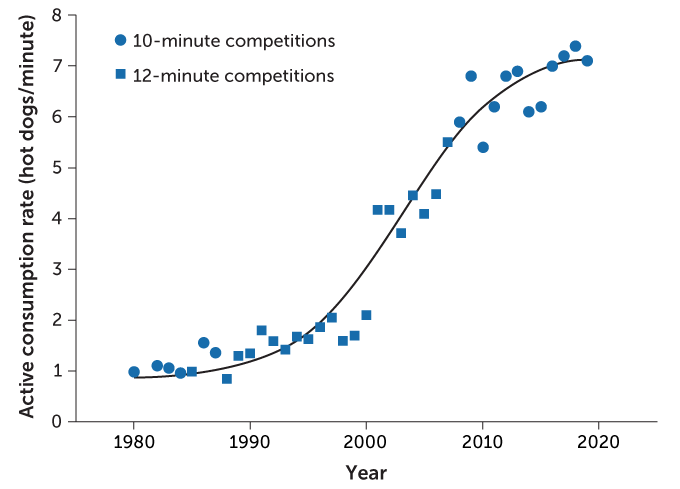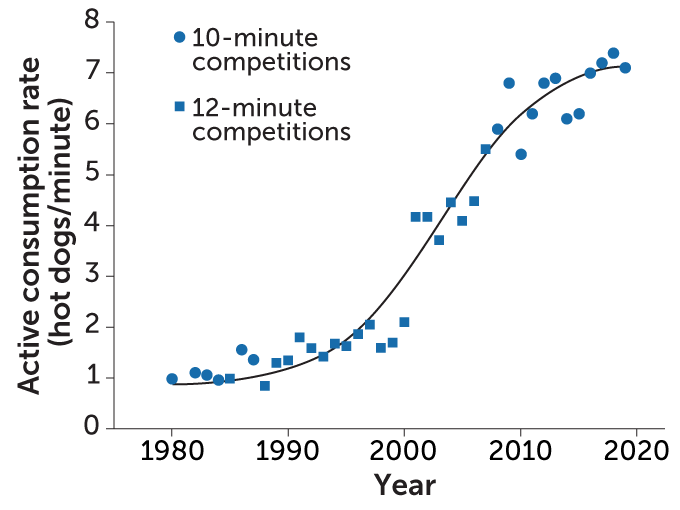Competitive hot dog eaters may be nearing humans’ max eating speed
A new analysis sets the limit at about eight franks per minute

Competitive eater Joey Chestnut, second from left, chows down during the 2019 Nathan's Famous Hot Dog Eating Contest. In 2020, he devoured 75 hot dogs in 10 minutes, setting a new record. Humans’ max may be 83 hot dogs in that timeframe, an analysis suggests.
Li Muzi/Xinhua/Alamy Live News









